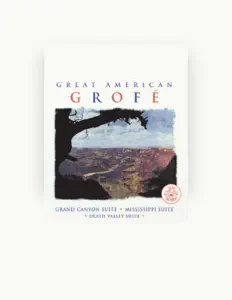
Classical
United States of America
Ferde Grofé
Mais álbuns de Ferde Grofé
Sobre Ferde Grofé

Terra natal
New York City, United States of America
Data de nascimento
1892
Género
Classical
Composer, arranger, multi-instrumentalist, and conductor Ferde Grofé was one of the earliest and most prominent figures to bridge the gap between jazz and art music in America. Born into a musical family in 1892, Grofé established himself in the popular and classical music worlds simultaneously: In the 1910s, he led and wrote for his own dance band while playing viola in the Los Angeles Symphony. Through the radio-friendly, compositionally sophisticated hits he wrote for bandleader and conductor Paul Whiteman in the 1920s, Grofé became an early visionary of the big-band movement and codified many of the conventions that came to define jazz more broadly, such as varying intricately composed sections with improvisation. His most enduring cultural contribution is his lavish orchestral arrangement of George Gershwin’s signature 1924 piano piece, Rhapsody in Blue, but Grofé also composed his own concert band and orchestral tone poems. Many of these were based around distinctly American themes, including Mississippi Suite (1925), Death Valley Suite (1949), and, most famously, the five-movement Grand Canyon Suite (1931). Grofé remained active as a conductor, educator, and composer—writing music for radio shows and film and undertaking high-profile commissions—until his death in 1972.
Semelhante a: Ferde Grofé
Descobre mais músicas e artistas semelhantes a Ferde Grofé, como Harry Shipman, Frank Campbell Milne, Victor Lane

![Ouve Cuban Overture (Arr. F. Grofé for Piano & Orchestra) [Live] de Rosa Linda & Ferde Grofé, vê letras, vídeos de música e muito mais! Ouve Cuban Overture (Arr. F. Grofé for Piano & Orchestra) [Live] de Rosa Linda & Ferde Grofé, vê letras, vídeos de música e muito mais!](https://is1-ssl.mzstatic.com/image/thumb/Music7/v4/73/03/26/730326d3-06f8-2cb7-8274-4c541b4fcba4/021475012336.jpg/75x75bb.webp)
















































